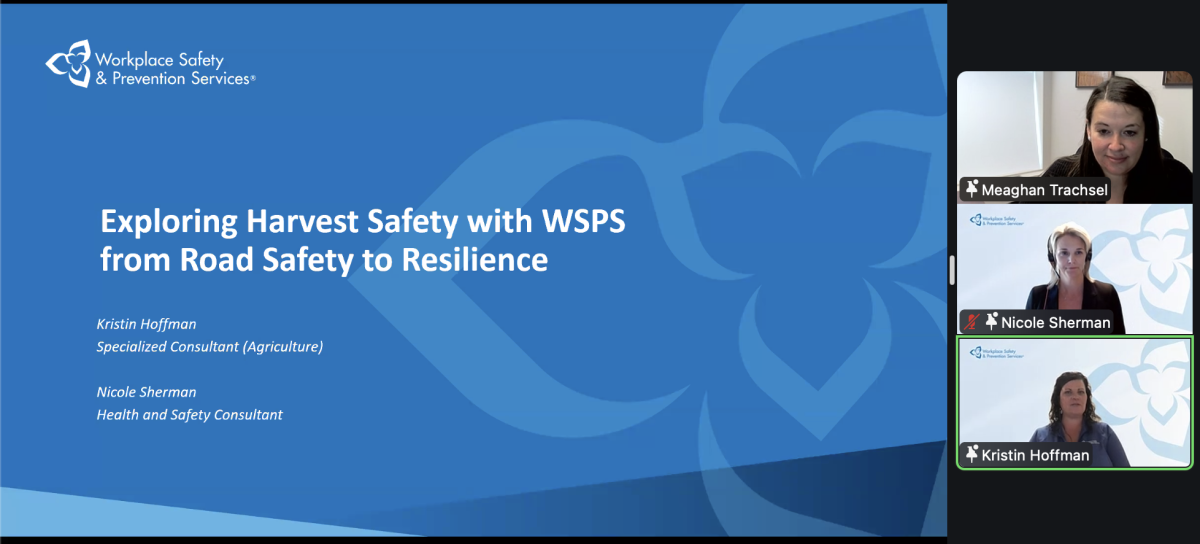Canada’s agriculture ministers will move to have their new suite of business risk management (BRM) programs running by the time their previous five-year Agricultural Policy Framework (APF) expires at the end of March.
Coming out of their meeting in Toronto over the weekend, the federal, provincial and territorial ag ministers issued a joint statement Saturday saying they would seek approval from their respective governments to launch the previously announced AgriInvest, AgriStability and AgriRecovery programs.
They also agreed to seek approval to extend the non-BRM programming from the APF for up to one more year starting April 1, 2008, a move that earned kudos from the Canadian Federation of Agriculture.
Read Also

Exploring Harvest Safety
Kristin Hoffman of WSPS explains measures for increased farm safety around harvest season
“This gives the industry the time we need to work with government on the new programs for Growing Forward (the name of the proposed framework to replace the APF) so we get them right,” said CFA president Bob Friesen in a release.
AgriInvest is intended to replace the coverage offered under the current Canadian Ag Income Stabilization (CAIS) program to cover margin losses of 15 per cent or less. AgriStability, meanwhile, is meant to replace CAIS compensation for farmers whose margin in the program year drops more than 15 per cent below their reference margin.
AgriRecovery, meanwhile, is the disaster relief framework, which is meant to ensure “rapid assistance for producers hit by smaller natural disasters.” Disasters covered would be regional in scope and easy to contain, with little overall impact on the industry nationwide and few trade implications. The ministers will ask their governments to fund these programs on a 60/40 federal/provincial basis.
Bigger disasters
As for larger natural disasters, with potential nationwide consequences for public health, trade action and Canadian agricultural competitiveness, the ministers agreed their governments “would work together to quickly address the unique circumstances and respond to the needs of producers.”
CFA’s Friesen, who raises hogs and turkeys at Wawanesa, Man., said the ministers appeared to have made no progress on programming to respond to such large-scale disasters, like the BSE crisis or the nationwide income crisis now seen in the hog industry.
Addressing the pressures on cattle and hog producers, the ministers said they had agreed to develop “a joint industry-government action plan to address these challenges and to support long-term profitability of the livestock sector.”
They also said the would speed up access to existing programs, such as targeted advances and interim payments, under AgriStability and AgriInvest, as well as the federal $600 million Kickstart program. With agreement in place on AgriInvest, Kickstart funds could start flowing early in 2008, the ministers said.
The ministers also said they would work to build up crop and livestock production insurance programs under the fourth BRM program, AgriInsurance.
The CFA noted it was “displeased” to see no apparent discussion on the topic of regional flexibility — that is, allowing provinces to tailor BRM and non-BRM programs to unique regional needs.
The non-BRM programming under the four remaining pillars of the APF include food safety and quality initiatives; science and innovation; environmental projects, such as environmental farm plans and ecological goods and services; and renewal, including skills development programs such as the Canadian Agricultural Skills Service (CASS).














